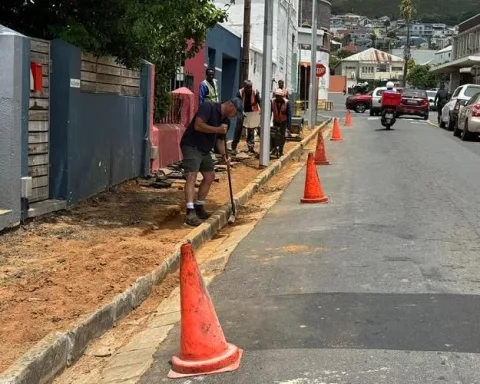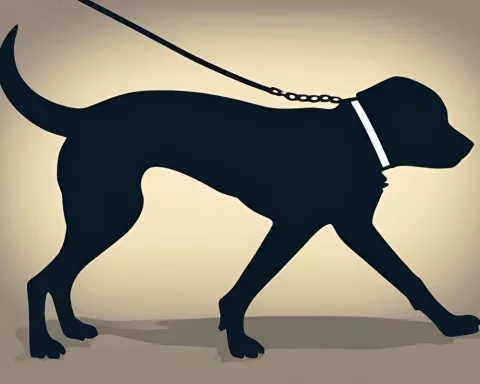The Spekboom, a plant indigenous to the Little Karoo in South Africa, has the unique ability to sequester carbon both day and night, making it a valuable tool in fighting climate change. Jobs 4 Carbon, a nonprofit organization, has successfully rejuvenated nearly 700 hectares of land by planting young Spekbooms. The organization aims to capitalize on the plant’s potential through carbon credits, and botanist Alastair Potts praises the Spekboom’s regenerative abilities in restoring the environment and reducing emissions from land degradation.
Reviving the Little Karoo: The Power of the Spekboom. Learn about the remarkable potential of the Portulacaria afra, also known as the Spekboom, in the battle against climate change. Unique in its ability to sequester carbon both day and night, the Spekboom is indigenous to the Little Karoo, making it an ideal candidate for revitalization efforts. Jobs 4 Carbon, a nonprofit organization dedicated to restoring the Spekboom, has successfully rejuvenated nearly 700 hectares, injecting life back into the once barren landscape.
Nestled in the semi-arid Western Cape of South Africa lies the Little Karoo, where 62-year-old local Andre Britz highlights the remarkable potential of the Portulacaria afra, also known as the Spekboom. Decades of overgrazing and poor land management had caused this once thriving, carbon-consuming shrub species to dwindle within this parched environment.
The Spekboom’s Role in Climate Change
Britz, an ecologically-minded activist, has spent the last decade emphasizing the importance of the Spekboom in the battle against climate change. The Spekboom is unique in its ability to sequester carbon both day and night, a trait not often found in plant species. Moreover, it is indigenous to the area, making it an ideal candidate for revitalization efforts.
Restoration Efforts: Jobs 4 Carbon
A decade ago, Britz established Jobs 4 Carbon, a nonprofit organization dedicated to restoring the Spekboom and rehabilitating the land ravaged by the severe drought from 2015 to 2020. A devoted group of planters works tirelessly across the rocky terrain, replanting young Spekbooms with the aim of returning the plant’s green cloak to the arid lands. So far, Jobs 4 Carbon has successfully rejuvenated nearly 700 hectares, injecting life back into the once barren landscape.
Jan Cloete, the team leader, is in awe of the transformation, saying, “It brings nature back to life.”
The Spekboom’s Miraculous Abilities
Botanist Alastair Potts holds the Spekboom’s regenerative abilities in high regard, deeming them nothing short of a miracle. Within its native semi-arid ecosystem, known as the “subtropical thicket”, the Spekboom generates “forest-like micro-environments”. Its leaves form a lush “carpet” that not only traps water and nutrients but also dust and, most crucially, carbon.
Carbon Sequestration and Photosynthesis
What distinguishes the Spekboom is its ability to switch between two types of photosynthesis, significantly boosting its carbon capturing capacity. It consumes carbon dioxide at night, storing it as malic acid, which it then uses for photosynthesis during the day while minimizing water loss.
Although claims of the Spekboom’s carbon sequestration abilities outperforming the Amazon rainforest have been refuted, advocates assert that, when left to grow in its natural habitat, it makes a substantial contribution to carbon sequestration. A 2006 study estimated that every hectare of Spekboom captures an average of four tonnes of CO2 annually, but some believe this figure could be as high as 15 tonnes.
Jobs 4 Carbon aims to capitalize on this potential through carbon credits, financial instruments bought by companies to offset their greenhouse gas emissions. However, to utilize this strategy, scientists must first reach a consensus on the precise amount of CO2 that this modest succulent can capture.
Environmental Restoration and Criticisms
Despite the challenges, Potts remains hopeful. He praises the Spekboom for lacking the drawbacks often associated with other tree-planting initiatives, which are criticized for creating monocultures in unsuitable ecosystems. Potts commends the Spekboom’s capacity to restore the environment, thereby reducing emissions from land degradation.
Jobs 4 Carbon: A Sustainable Future
Jobs 4 Carbon, funded by international foundations and private businesses, plans to rejuvenate over 13,000 hectares across the region. Potts suggests that even more could be achieved on a national scale. Currently, the organization plants Spekboom free of charge if landowners commit to leaving their plot undisturbed for at least 15 years.
Britz, steadfast in his mission, grows 15,000 small plants in his church’s courtyard, prepping them for their journey to the dry soil. His dedication echoes the wisdom of his grandfather: “Take care of your veld, and your veld will take care of you.”
Andre Britz, his team, and the humble Spekboom serve as a powerful symbol of nature’s resilience and a poignant reminder of the significant role local efforts can play in global climate action.
Q1: What is the Spekboom?
A1: The Spekboom is a plant indigenous to the Little Karoo in South Africa, known for its unique ability to sequester carbon both day and night.
Q2: What is Jobs 4 Carbon?
A2: Jobs 4 Carbon is a nonprofit organization dedicated to restoring the Spekboom and rehabilitating the land ravaged by the severe drought from 2015 to 2020.
Q3: What is the Spekboom’s role in climate change?
A3: The Spekboom is unique in its ability to sequester carbon both day and night, making it a valuable tool in fighting climate change.
Q4: How much carbon can the Spekboom capture?
A4: A 2006 study estimated that every hectare of Spekboom captures an average of four tonnes of CO2 annually, but some believe this figure could be as high as 15 tonnes.
Q5: What is carbon sequestration?
A5: Carbon sequestration is the process of capturing and storing carbon dioxide from the atmosphere.
Q6: What is the goal of Jobs 4 Carbon?
A6: Jobs 4 Carbon aims to rejuvenate over 13,000 hectares across the region and capitalize on the Spekboom’s potential through carbon credits, financial instruments bought by companies to offset their greenhouse gas emissions.












